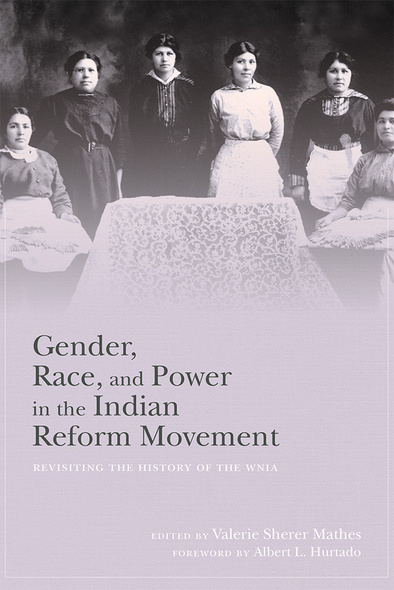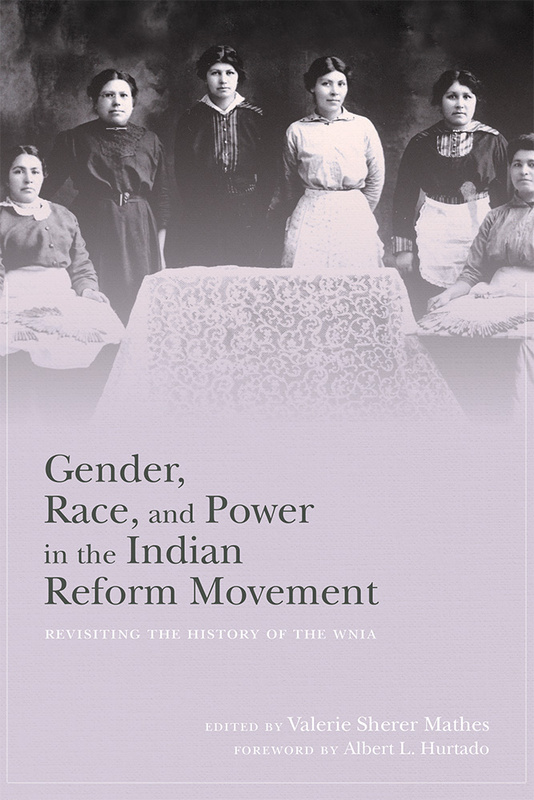Gender, Race, and Power in the Indian Reform Movement
Revisiting the History of the WNIA
Founded in the late nineteenth century, the Women's National Indian Association was one of several reform associations that worked to implement the government's assimilation policy directed at Native peoples. The women of the WNIA combined political action with efforts to improve health and home life and spread Christianity on often remote reservations. During its more than seventy-year history, the WNIA established over sixty missionary sites in which they provided Native peoples with home-building loans, founded schools, built missionary cottages and chapels, and worked toward the realization of reservation hospitals.
Gender, Race, and Power in the Indian Reform Movement reveals the complicated intersections of gender, race, and identity at the heart of Indian reform. This collection of essays offers a new interpretation of the WNIA's founding, arguing that the WNIA provided opportunities for indigenous women, creates a new space in the public sphere for white women, and reveals the WNIA's role in broader national debates centered on Indian land rights and the political power of Christian reform.
The collection of chapters that makes up this important re-examination of the Women's National Indian Association (WNIA) offers a compelling and complex analysis of Indigenous and White women's activism.'--Sarah Eppler Janda, Southwestern Historical Quarterly
Especially important is the documentation of sociopolitical networks that extend from Indian Territory to California to Eastern and Midwestern urban centers of power. This book is also significant for how it situates Native women in the WNIA's activities, showing them to be activists rather than passive recipients of elite and middle-class American altruism. Recommended.'--N. J. Parezo, Choice
Gender, Race, and Power in the Indian Reform Movement presents an important new look at one of the most significant Indian reform organizations. Re-examining the WNIA's history, membership, and activities, contributors to this volume highlight the intersectionality of race, gender, and identity.'--Lisa E. Emmerich, professor emerita of history, California State University, Chico
This fine collection is the first to explore the activities of Indigenous women in the WNIA and to locate the organization in the broader gendered politics of Indian policy. It is a worthwhile contribution to both women's and policy history.'--Katherine M. B. Osburn, author of Choctaw Resurgence in Mississippi: Race, Class, and Nation Building in the Jim Crow South, 1830-1977
Valerie Sherer Mathes is a professor emerita of history at City College of San Francisco. Her published books include The Women’s National Indian Association: A History (UNM Press).
List of Illustrations
Foreword
Albert L. Hurtado
Introduction. Still Working in the Field: The WNIA and Gender History
Jane Simonsen
Part One. New Interpretations
Chapter One. From Indian Territory to Philadelphia: A Critical Reexamination of the Origins and Early History of the Women's National Indian Association, 1877-1881
John M. Rhea
Chapter Two. Two Marys and a Martha: Three Massachusetts Women and Indian Reform in the 1880s
Curtis M. Hinsley
Part Two. The National Scene
Chapter Three. A Place at the Table: The Women's National Indian Association in the Indian Reform Arena
Valerie Sherer Mathes
Part Three. The Influence of Helen Hunt Jackson
Chapter Four. Her Soul Is Marching On: Helen Hunt Jackson's Followers in the Indian Reform Movement
Phil Brigandi
Chapter Five. In the Shadow of Ramona: Frances Campbell Sparhawk and the Fiction of Reform
David Wallace Adams
Part Four. From Philadelphia to Northern California: Coast to Coast Reform
Chapter Six. Mary Lucinda Bonney Rambaut: Educator and Indian Reformer
Valerie Sherer Mathes
Chapter Seven. C. E. Kelsey and California's Landless Indians
Valerie Sherer Mathes
Part Five. Indian Women and Self-Determination
Chapter Eight. "Your Indian Friend": Indigenous Women and Strategic Alliances with the WNIA
Jane Simonsen
Conclusion. "Indians Can Be Educated": The WNIA at the 1893 World's Columbian Exposition
Lori Jacobson
Appendix. WNIA Missionary Stations
Valerie Sherer Mathes
Bibliography
Contributors
Index






